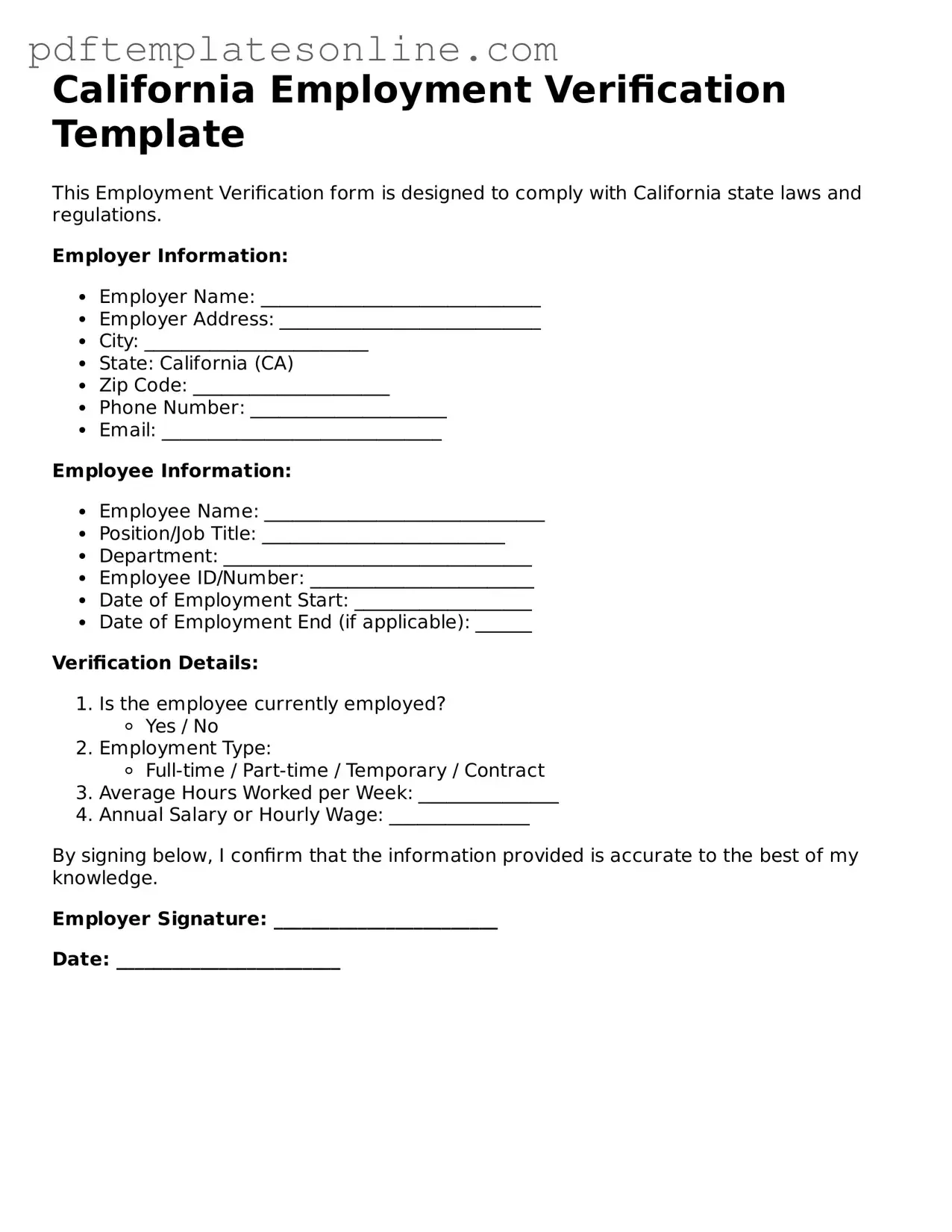Filling out the California Employment Verification form can be straightforward, but many individuals make common mistakes that can lead to delays or complications. One frequent error is providing incomplete information. The form requires specific details about employment history, including dates of employment and job titles. Omitting any of this information can result in processing delays or the need for additional follow-up.
Another mistake is failing to sign and date the form. Signatures serve as a confirmation of the accuracy of the information provided. Without a signature, the form may be considered invalid, requiring resubmission. It is essential to double-check that the form is signed and dated before submission.
People often overlook the importance of accuracy in their personal information. Typos in names, addresses, or Social Security numbers can create significant issues. Such errors may lead to mismatches in records, which can complicate verification processes. Ensuring that all personal details are correct is crucial.
Additionally, some individuals neglect to include all relevant employment details. For instance, if someone has held multiple positions within the same company, it is vital to list each role separately. This oversight can give a misleading impression of employment history and may affect the verification outcome.
Finally, misunderstanding the purpose of the form can lead to incorrect submissions. The California Employment Verification form is designed to confirm employment status and details, not to provide personal references or opinions. Focusing on the factual aspects of employment is essential to ensure the form meets its intended purpose.
